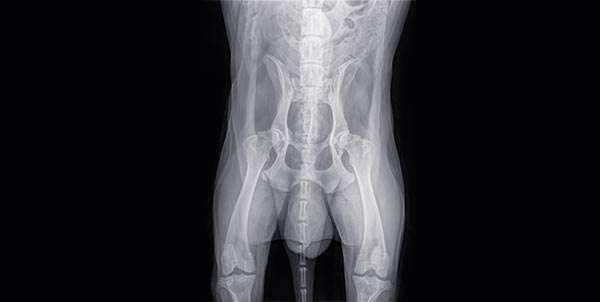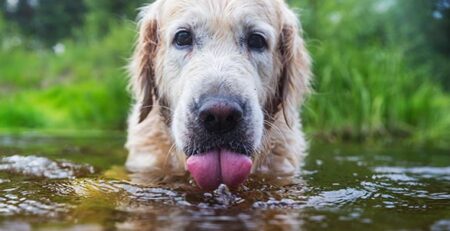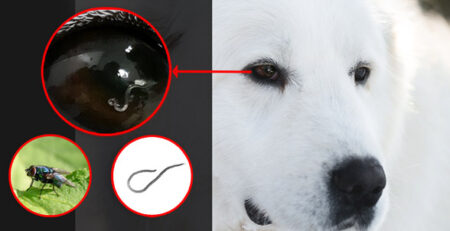Table of Contents
If your dog has dysplasia, know that if he only staggers today, tomorrow he may collapse completely. So, if you want to spare him from lameness, pain and dislocation, it’s imperative to rely on a specialist: the orthopedist’s word.
Dysplasia is a congenital disease of the dog that consists of a developmental abnormality of the hip, technically called the coxo-femoral joint.
What happens, in practice, is that the head of the dog’s femur fails to lodge in the pelvic cavity (called the acetabular), and this misalignment produces abnormal and wearing frictions of the cartilages.
Do you know that some breeds are more at risk than others?
Dysplasia generally affects large, giant, and molossoid dogs for which skeletal weight is a predisposing factor.
- Great Dane
- Bovaro
- Bulldog
- Course
- Dogue de Bordeaux
- Golden Retriever
- Labrador Retriever
- Neapolitan Mastiff
- German Shepherd
- Rottweiler
- St. Bernard
- Setter
- Newfoundland
Please note: half-breeds and crossbreeds are not exempt.
Can you recognize dysplasia in a dog?
If your dog exhibits lameness, stiffness, muscle atrophy, indolence and pain, he may indeed be dysplastic.
The consequences of the gradual worsening of this condition are dislocation, progressive arthrosis, lameness, and increasing difficulty in walking.
What are the triggers of dysplasia?
The genetic, and therefore hereditary, component is the trigger for the onset of the disease.
The likelihood that more dysplastic dogs will be born from dysplastic fathers and mothers is high, so we strongly advise against mating dogs with overt pathology: you would only get to give birth to puppies that are already sick
Rather, sterilize your dog.
What elements contribute to the aggravation of dysplasia?
The evolution and possible aggravation of dysplasia also depend on the animal’s living conditions and certain environmental factors:
- nutrition: dietary excesses or deficiencies can have a negative effect on the development of the hip joint. Ask your Veterinarian to prescribe a balanced diet for your dog to ensure he is getting the right amount of calcium, minerals, and other nutrients.
- excessive physical activity: mechanical or traumatic stresses such as jumping or sudden changes in direction are another joint stressor.
Conversely, however, controlled exercise stimulates and develops muscle tone and ensures muscle tone.
How important is it to make an early diagnosis?
Dysplasia can occur in adult and older dogs but also in puppies.
All puppies of at-risk breeds should undergo arthroscopic diagnostic examinations between 16 and 18 weeks of age to detect, even in the absence of symptoms, the disease.
Neglecting early screening risks having dysplasia diagnosed late, thus precluding your veterinarian from preventive and corrective interventions.
What tests should a dog undergo for proper preventive diagnosis?
The complexity of the pathology requires a thorough orthopedic examination during which some specific tests useful for diagnosis can be performed:
- Hip abduction and external rotation test
- Hip extension test
- Radiographic examination
Do you know the therapies for the treatment of dysplasia?
Each individual case should be evaluated and treated in the most appropriate manner by choosing from the different options available: conservative and surgical therapy.
CONSERVATIVE THERAPY: This is used when the dog is still young or when the subject is an adult or elderly and already has osteoarthritic changes.
It involves the use of drug, physiotherapy, and herbal therapies that aim to reduce the worsening of osteoarthritis, pain spikes, and inflammation.
SURGICAL THERAPY: The purpose of surgical treatment is to prevent or diminish the formation of the disabling arthritic process that could irreversibly impair your dog’s quality of life.
What kind of surgery, then?
Surgeries are divided into two classes: the
remodeling
, or reconstructive, and the
replacements
.
- Remodeling surgery involves making two cuts, one on the ileum and another on the pubis, achieving greater stability of the pelvis with less stress on the inserted plates.
- Replacement surgery, on the other hand, consists of replacing the natural joint with an artificial one. The fitting of a hip replacement is now a routine surgical procedure, well proven by decades of application.
And do you also know that the new frontier is regenerative therapy?
Regenerative medicine now represents the alternative to replacing damaged tissue: this new branch of medicine exploits the potential of stem cells to replicate and differentiate and, therefore, to regenerate organs and tissues.
The stem cells used are mesenchymal stem cells(MSCs), found in many tissues of the body and mainly in bone marrow, and Vascular Stromal Fraction(VFS) stem cells, obtained from the adipose tissue of the same dog.
A third method is the use of platelet-enriched plasma or PRP (Platelet-Rich Plasma).
Platelets promote healing of damaged tissues through their ability to release “growth factors” that is, proteins that can stimulate cell proliferation and differentiation.
PRP finds wide application and possibility of success in cases of osteoarthritis, cartilage and tendon injuries, bone tissue necrosis, fracture repair, and tissue strengthening in case of prosthesis application.
Improve your dog’s quality of life: you can do it today
Ultimately, we can say that there is no treatment that cures hip dysplasia once and for all.
But a proper combination of preventive actions can certainly help improve your dog’s quality of life.
In severe cases, for which conservative therapies are insufficient and where surgical therapies cannot be used, know that there are tools and practices that can relieve the animal’s pain and suffering:
- PHYSIOTHERAPY: Electrostimulation, ultrasound and hydrotherapy strengthen muscles and hip flexibility
- ORTHOPEDIC MATS: ensure even distribution of the dog’s weight by avoiding pressure loads on the protruding parts of his body, namely the joints
- INFRARED TREATMENT: heat is known to protect against moisture and reduce pain
- ORTHOPEDIC PRODUCTS: braces and harnesses stabilize joints and help the dog by supporting its weight
Your veterinarian will be able to direct you toward the correct treatment approach and in the proper management of the dysplastic dog.
At La Veterinaria Clinic, an orthopedic specialist is always available to you for a thorough examination and diagnostic tests necessary to make a correct diagnosis.
Please feel free to contact us for an appointment.
La Veterinaria Clinic is open daily h24 including holidays and with First Aid service from 8 pm to 8 am.
For the joy of seeing them HAPPY.
Edited by Dr. Marco Currenti – Veterinary Physician Specialist in Orthopedics.











